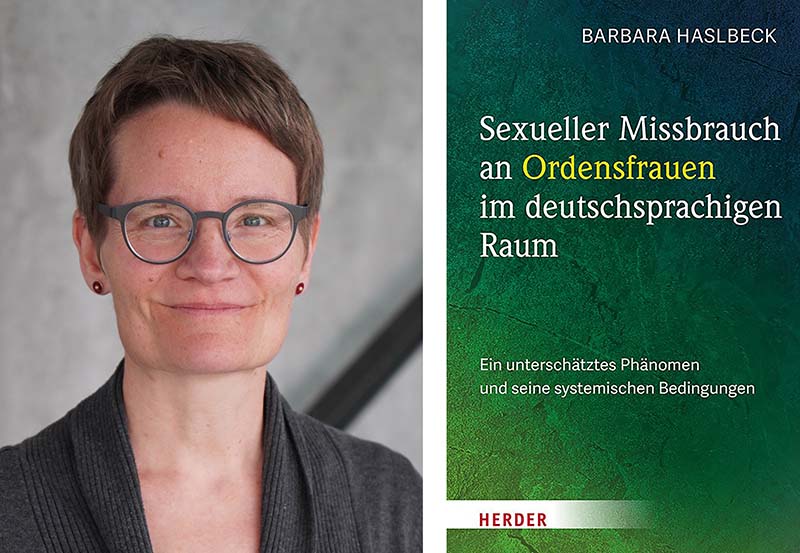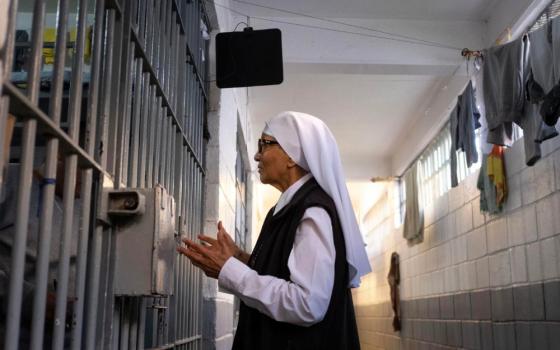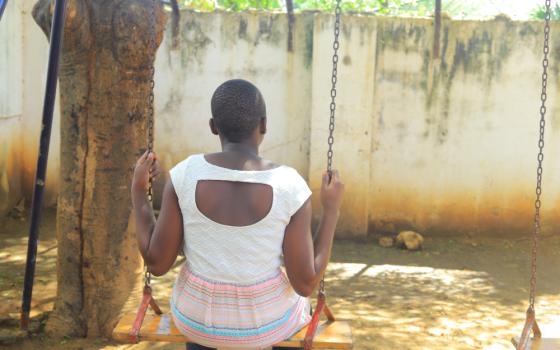
Barbara Haslbeck, professor of pastoral theology and Homiletics at the University of Regensburg, Germany, is author of "Sexual Abuse of Catholic Women Religious Victims, Perpetrators and (Non)consensual Relationships," released Sept. 15, 2025. (OSV News/Courtesy of Barbara Haslbeck)
Editor's note: This story is part of Global Sisters Report's yearlong series, "Out of the Shadows: Confronting Violence Against Women," which will focus on the ways Catholic sisters are responding to this global phenomenon.

(GSR logo/Olivia Bardo)
The first research study into the sexual abuse of women religious in German-speaking countries has shown a common pattern of spiritual abuse with global cases and highlighted that the majority of abuse is perpetrated by men, although some sisters were abused also by women superiors.
The study titled "Sexual Abuse of Catholic Women Religious Victims, Perpetrators and (Non)consensual Relationships" is the culmination of three years' work by Barbara Haslbeck, professor of pastoral theology and homiletics at the University of Regensburg, Germany.
Speaking to OSV News about the new study, published on Sept. 15, Haslbeck explained that 15 women who experienced sexual abuse as religious in German-speaking countries were interviewed for the study.
"Given the sensitive nature of the subject matter, this is a major study," Haslbeck told OSV News.
The aim of this pioneering research project is to gain an understanding of "the systemic conditions of abuse and determine the consequences of the abuse," the researcher said.
It also aimed to shed light on the characteristics of the perpetrators, the grooming, the extent of the abuse, the occasions of the abuse, and identify spiritual manipulation in the abuse process.
The assumption that priests are "harmless" was highlighted as an enabling factor in the communities in which the women lived, the research director said. Other issues included obedience as "a vulnerability factor," while chastity and the "bridal motif" were identified by the victims as "ambivalent ideals" in the face of abuse — used by perpetrators to lure their potential victims.
The research shows that the median age of victims when the abuse began was 28. Nine of the women have since left the religious communities they were members of, while six continue to live as women religious.
The abusers were identified as 12 men, of whom 10 were fathers and brothers of a religious community and two were diocesan priests. The three other abusers were fellow sisters.
The research showed that there was a large age gap between victims and their abusers in most cases. Eight of the perpetrators were 17 to 35 years older; four of the perpetrators were 10 to 15 years older, and three of the perpetrators were less than 10 years older.
The research has shown that abuse of power is strictly connected to physical abuse.
The perpetrators were spiritual directors, a novitiate director, superiors who were both male and female, retreat leaders and fellow sisters with authority. The difference in status offered specific opportunities to groom. The forms of abuse included sexualized violence and lasted in most cases between seven and 16 years.
The study has shown that abuse can affect all women religious and that there are factors that make them particularly vulnerable. Victims identified abuse as minors as increasing their vulnerability. Treating sexuality as a taboo also made the victims more vulnerable.
For some victims, it was difficult to recognize the abuse as such, as abuse in their spiritual sphere "weakens women's self-esteem."
Advertisement
The study also found that perpetrators use their role and power to groom and legitimize the abuse, and so abuse is often spiritually underpinned.
Asked if any of the women interviewed for the study had experienced spiritual abuse similar to that experienced by alleged victims of Slovenian theologian and artist, Fr. Marko Rupnik, Haslbeck said: "Yes, the women I interviewed also report similar patterns, such as spiritual grooming for sexual abuse, the mixing of spiritual guidance with psychological elements, and the great power difference between the spiritual director and the dependent women."
"What is surprising is the focus on sexual abuse of nuns by nuns," she added. "The perpetrators are always superiors and have authority," said the theologian, whose research focuses on spiritual abuse, spirituality after abuse and sexual abuse among Catholic women religious.
The publication of the new research study follows Haslbeck's address to the Congress of the European Society for Catholic Theology, which was hosted by Loyola Institute at Trinity College Dublin in August.
In her Dublin talk on "Specific Patterns of Spiritual Abuse," she highlighted that "just as there is a violation of sexual autonomy or self-determination, there is a violation of spiritual autonomy."
Based on the testimonies of victims, Haslbeck identified three main patterns that victims repeatedly describe in this type of abuse. They are: love bombing and dependence, pressure to perform and submit, and thought reform.
"Love bombing" refers to a manipulative and abusive tactic where an individual showers another with excessive displays of affection and attention to gain control and accelerate a relationship.
She told the theology congress that victims of spiritual abuse often suffer breakdowns, isolation, and alienation from both themselves and God. Many cannot find support.
"It is risky, it is dangerous to talk about spiritual abuse," Haslbeck said.







